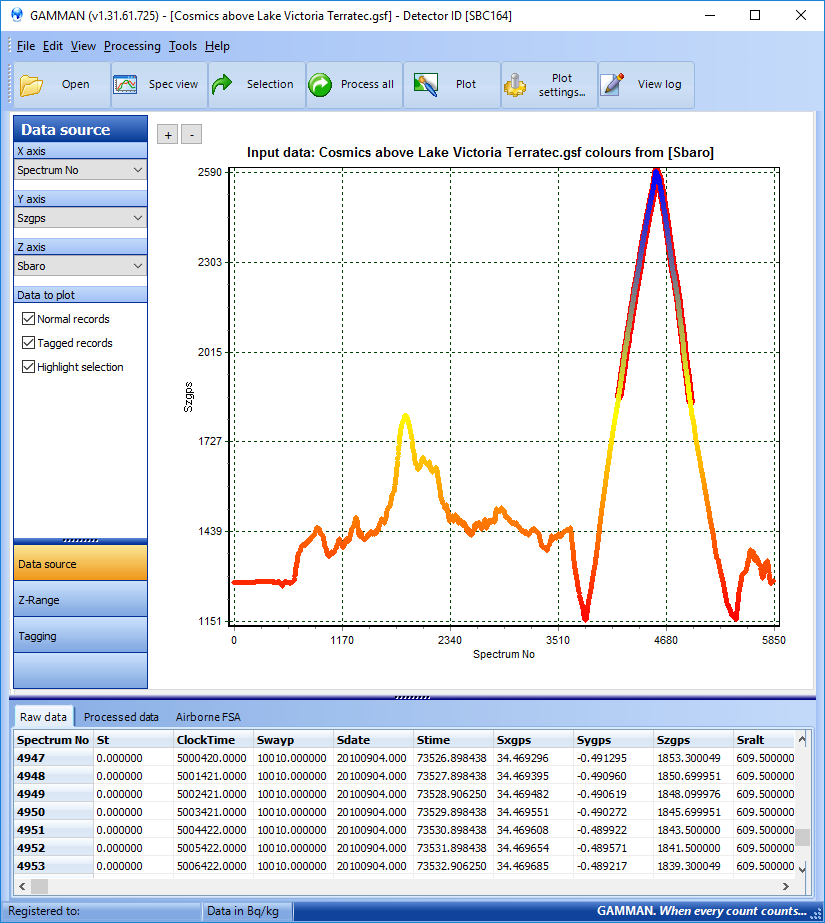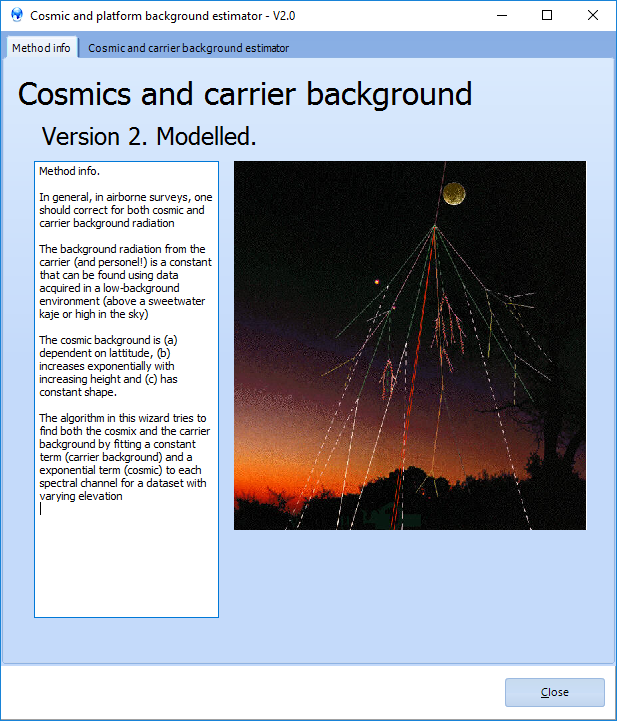1. Cosmic background spectra in Gamman
Starting in Gamman V 1.32, we have implemented a novel approach to get carrier and cosmic backgrounds from a dataset taken at high altitiude. Traditionally, cosmic and carrier spectra are determined empirically, following the algorithm as described by Minty et al, (see GSO journal of Australian Geology and Geophysics, 17(2) 1997).
This algorithm uses the fact that in the lower atmosphere, the spectrum originating from cosmic radiation is constant in shape, and increases exponentially with increasing elevation, All radiation having energies > 3MeV stems from cosmic radiation. The carrier (plane) background is considered a constant. Therefore, the count rate in each channel can be described as the sum of a varying cosmic term + a static background term:
Chn(h) = Cosmic(h) + Carrier (cps).
Getting the cosmic background spectrum can be done by taking a large dataset of spectra, all taken at elevations > 600m, and fitting each channel for all elevations against the count rate in the cosmic channel.
A new approach
However, this approach has shown not to be very accurate. We have therefore developed a new approach based on a modelled cosmic spectrum.
This approach is based on using an MCNP model of cosmic radiation. In this model, we assume all cosmic radiation seen by the detector to be created in a volume of air of 300m radius around the detector. We have used the lines predicted in a paper by Letaw (Letaw, J.R. et al. 1989, JGR 94, 1211) in our model. We also included - as suggested by Letaw - a continuous 1/E^n background, in which n ranges between 1 and 1.4.
The result is a cosmic "standard spectrum" that can be used to fit the gamma-ray data taken at high altitudes. Below a summary of the use of the new algorithm.
Step by step
First, select a range of spectra flown at elevation > 600m (see example below)

Then open the cosmic corrections box, and select the 2nd Tab:


Here you find a number of settings:
Normally, you will have a column in your data containing the cosmic counts above 3MeV. Some systems store that data in the last spectrum channel. Make the appropriate choice in the selection box.
The A1 adjuster allows you to fine-tune the spectrum stabilization. This sometimes helps to improve the fitting of the peaks
Ticking the USE NNLS box switches non-negative least squares on or off.
The Power box allows to change the 1/E model used in cosmic fitting. The power normally is between 1 and 1.5. Adjust this to find the best fit
The 1/E scaler is to adjust the intensity of the 1/E continuum w.r.t. the model peaks in the cosmic spectrum. Here we advice a value of 0.5.
You can play a bit with these settings to get an optimum fit to the data. The red line is the cosmic spectrum found. The green line is the carrier background. Close the wizard to store the newly found spectra as backgrounds.
{}
